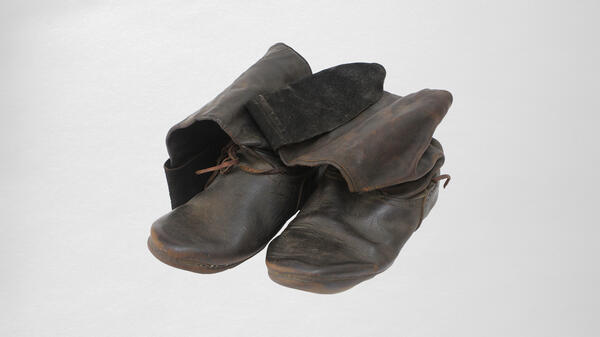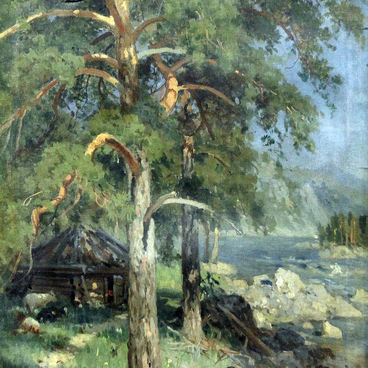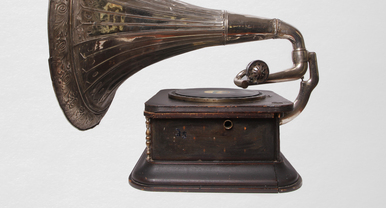The Selkup people are representatives of one of the peoples of Siberia. Researchers attribute them to the Ural small race. Experts believe that this nation, which name is translated as ‘forest, taiga men, ” appeared as a result of merging Samoyedic tribal people and aboriginal population originated in the middle basin of the Ob River.
Since ancient times, this area’s inhabitants were engaged in hunting, they hunted fur-bearing animals and deers. The bow and arrows were their primary weapon. The Selkups sat a high value on hides and furs. The hunters did their best to kill the animals with one headshot so that not damage hides. The fur was used to decorate clothes and houses. Traditional shoes, ichigy, and mukluks, were sewn from the crafted leather.
The ichigy exhibited in the museum are light knee-high boots with a soft toe and an inner heel stiffener. They were in high request among the hunters as they made it possible to flit about in the forest as best as one can, and reliably protected their feet. Commonly, the ichigy were made of deerskin: such shoes were particularly trouble-free and comfortable. A boot-top made of thick sackcloth to cover the knees were sewn if necessary. Often the ichigy were wrapped around with special string on the feet so that snow would not get into boots. These shoes can be easily dried: the knee-high boots were turned inside out and placed near the fire with the shoe soles upwards.
Many other Russian nations wore soft and comfortable shoes like the ichigy. For example, saffian leather boots, popular in the 18th and 19th centuries, were one of the ichigy’s versions. These boots were heeled, painted in different colors, and did not fit against the foot so tightly. However, such shoes were quite expensive, so by far, not everyone could afford them. In old photographs, one can see that simple peasant rarely wore soft leather knee-high boots; usually, only the upper class wore them.
Today, ichigy are made of saffian leather or yuft, the types of soft crafted leather. They are made in cobbler shops or manually at the factories. Most commonly, each pair of such knee-high boots is unique: masters create original garnitures, cut pieces, select color schemes, and decorate shoes with different ornaments.
Since ancient times, this area’s inhabitants were engaged in hunting, they hunted fur-bearing animals and deers. The bow and arrows were their primary weapon. The Selkups sat a high value on hides and furs. The hunters did their best to kill the animals with one headshot so that not damage hides. The fur was used to decorate clothes and houses. Traditional shoes, ichigy, and mukluks, were sewn from the crafted leather.
The ichigy exhibited in the museum are light knee-high boots with a soft toe and an inner heel stiffener. They were in high request among the hunters as they made it possible to flit about in the forest as best as one can, and reliably protected their feet. Commonly, the ichigy were made of deerskin: such shoes were particularly trouble-free and comfortable. A boot-top made of thick sackcloth to cover the knees were sewn if necessary. Often the ichigy were wrapped around with special string on the feet so that snow would not get into boots. These shoes can be easily dried: the knee-high boots were turned inside out and placed near the fire with the shoe soles upwards.
Many other Russian nations wore soft and comfortable shoes like the ichigy. For example, saffian leather boots, popular in the 18th and 19th centuries, were one of the ichigy’s versions. These boots were heeled, painted in different colors, and did not fit against the foot so tightly. However, such shoes were quite expensive, so by far, not everyone could afford them. In old photographs, one can see that simple peasant rarely wore soft leather knee-high boots; usually, only the upper class wore them.
Today, ichigy are made of saffian leather or yuft, the types of soft crafted leather. They are made in cobbler shops or manually at the factories. Most commonly, each pair of such knee-high boots is unique: masters create original garnitures, cut pieces, select color schemes, and decorate shoes with different ornaments.



